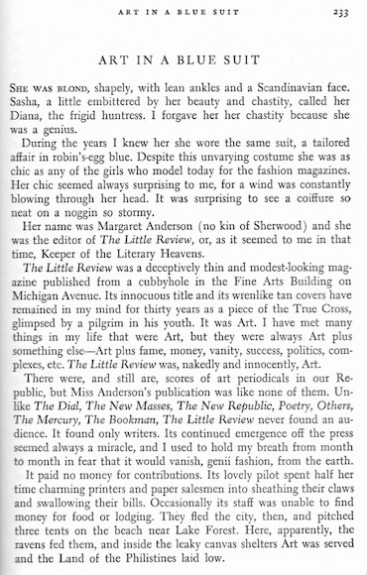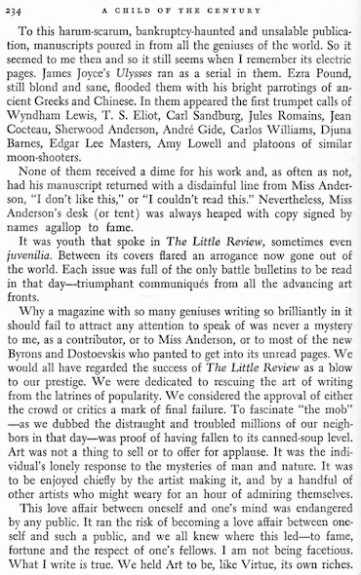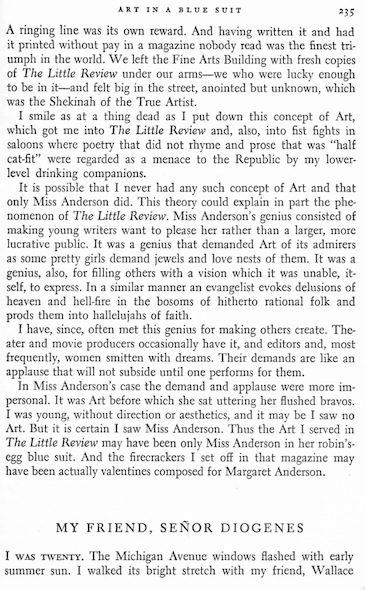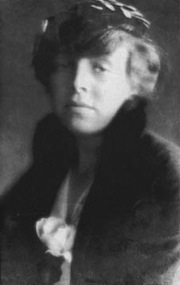I’ve been re-reading Ben Hecht’s massive 1954 memoir, A Child of the Century, which Gary Giddins rightly calls “his masterpiece.” I think of it as Bennie’s wised-up wisdom book. It reads for delicious stretches like the essays of a Midwestern Montaigne and is filled with scenes of an unforgettable Chicago, where Hecht first came to prominence and where, for connoisseurs of newspaper journalism, his peerless byline is still remembered.
To give a sense of the book’s flavor, here are three pages paying homage to Margaret Anderson and her ur-literary magazine, The Little Review.
(Click each page to enlarge for legibility.)



white line space
The peculiar thing is that Hecht satirized Anderson mercilessly in my favorite of his 10 novels, the oddly titled Humpty Dumpty, published in 1924. He also pictured himself in even less flattering terms. As I’ve noted in The Z Collection, the protagonist of Humpty Dumpty is a wolfish philanderer by the name of Ken Savaron (clearly modeled on Hecht himself) who is desperate to seduce Helen Dean (obviously based on Anderson):
Although he regards her as “a redundant and make-believe aesthete,” she is nevertheless “a stimulus that hoisted him onto a pedestal of rhetoric and started him shoveling adjectives into her lap.” More than that, he sees her as an antidote to his romantic involvement with the conventional Stella Winkelberg, whose philistine family he despises for its bourgeois conformity. He serenades Helen not only with his technical brilliance but lays on his aesthetic judgments and vents his rage against the moralistic clichés of the booboisie, even against what he regards as the clichés of the avant-garde. …
When Savaron confirms what he has suspected — that Helen is a lesbian (her virginity “a bit more involved than the usual hymen complex”) — his homophobia rises to the surface. It turns out that he’s as narrow and conventional in his attitude as any conforming moralist. … Savaron can rant all he wants about the Winkelbergs and the artist bohemians both, but he is as flawed as they are and in the end defeated by his own inauthenticity. “I’m a theory that has refuted itself,” he says on the point of suicide.
Looking back in his memoir 30 years later, Hecht must have thought better of his fictional portrait of Anderson: No “redundant and make-believe aesthete” she. As to the mocking self-portrait in that novel, I think his overweening confidence kept him from accepting a devastating self-diagnosis, the implications of which would come to haunt his literary reputation.
Postscript: Jan. 5 — Hecht speaks with the real Jack Kerouac. An interview from October 1958:





